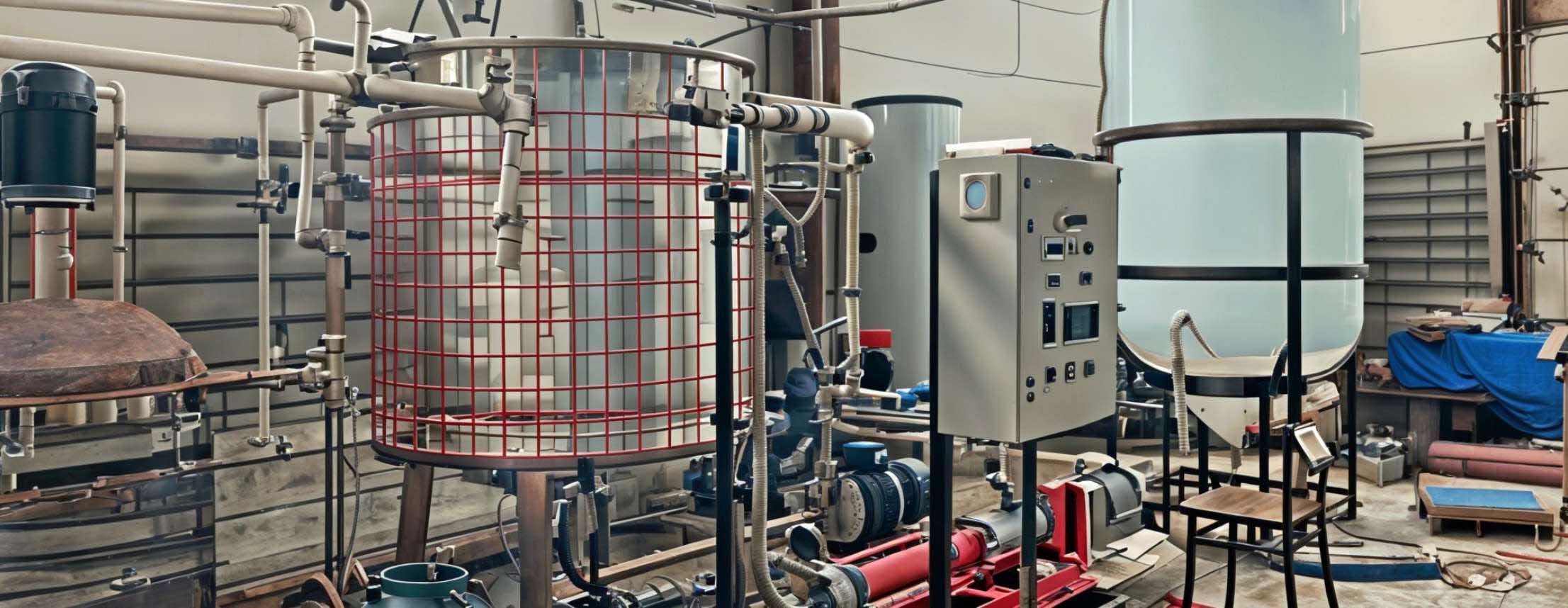
ECOBIOCYCLE PROJECT SUMMARY
Concept and Objectives
The concept of the EcoBioCycle project is to create a closed recycle wastes for utilization and production of high-tech, environmentally friendly and cost-effective products for agriculture.
Project objectives:
- Elimination of technological backlog in the sphere of processing of agricultural waste and caustobiolites.
- Creation of waste-free production.
- Production of inexpensive and effective fertilizers, feeds and biostimulants.
- Creation waste-free production.
- Reduction of agricultural producers’ costs.
- Expansion of raw material base at the expense of waste and local resources.
- Export of products with high added value.
- Thus, the project concept combines the solution of environmental and technological problems to increase efficiency of agriculture.

Challenges:
- Large volumes of unutilized organic waste.
- Low efficiency of utilization of local resources (peat, sapropel, rice husks).
- High cost of traditional fertilizers and fodder.
- Technological lag in the processing of organic waste and local raw materials.
Solution:
- Waste-free utilization of organic waste Deep processing of peat, sapropel and rice husk into highly efficient products.
- Application of breakthrough technologies: cavitation, electrochemically activated solutions, bioconversion.
- Automation of processes and integration of artificial intelligence.
Result:
- Lower prices for environmentally friendly and efficient fertilizers, feeds and biostimulants.
- Expansion of the raw material base of agriculture.
- Reduction of costs of agricultural production.
- Overcoming the technological lag.
- Export potential of high value-added products value.
EcoBioCycle Raw Materials and Technologies

Raw materials:
- Organic agricultural waste
- Rice husks
- Caustobioliths (peat and sapropel)
EcoBioCycle technology:
- Stepwise bioconversion of organic waste
- Cavitation reactors for process intensification
- Electrochemically activated (ECA) solutions for extraction and hydrolysis
- Pyrolysis of rice husk to produce silicon nano dioxide
Modular structure and automation:
- The plant consists of individual production modules
- High degree of process automation
- Integrated control systems based on artificial intelligence.
EcoBioCycle Products:
High-calorie balanced mixed fodders
- From organic waste and peat
- Enriched with silicon nanodioxide and biologically active substances
- High protein content (more than 20%)
Biostimulants:
- Contains humic and fulvic acids
- As well as biologically active substances, silicon nanodioxide, amino acids and trace elements.
- Stimulate growth, increase yield and plant health
Organomineral fertilizers (OMF):
- Contains NPK, humic and fulvic acids, nanodioxide silicon.
- Enriched with trace elements Increase soil fertility and crop yields
Economic prospects of EcoBioCycle
For the enterprise:
- High profitability of production due to breakthrough technologies
- Quick payback of the project (less than 1 year)
- Significant margin in the sale of environmentally friendly products
- Scalability of business due to replication of modules
- Entry into international markets
For the market:
- Reduction of agricultural producers’ costs for fertilizers and fodder
- Development of peat and sapropel deposits
- Expansion of raw material base from waste and local resources
- Attracting investments in waste processing and agro- industrial complex development
- Promoting sustainable development of territories
- The global scale of the project will bring economic benefits for both business and the local economy.
- The global scale of the project will bring economic benefits for both business and the agricultural sector.
A brief financial model of the project.
- Estimated data for the forecast for 2026 is taken as a basis.
- Waste treatment volume: 12,859 tons per year
Of which:
- Mango peel- 8,539 tons/year
- Mango seeds- 1,872 tons/year
- Peat- 2,448 tons/year
Output:
- Liquid mixed fodder, (t/year) – 3 600
- Granulated mixed fodder, (t/year) – 2 880
- Biostimulants, (t/year) – 21 600
- Humigel, (t/year) – 11 520
TOTAL: 39 600 tons/year
Investments in fixed assets: $2 118 492. At that, external investments will amount to $953,254. The remaining investment amount according to the project ($2,118,492 – $953,254 = $1,165,238) is planned to be allocated from profits.
Operating Expenses:
- Total costs, ($/year) – 527,454
- Personnel costs, ($/year) – 734,400
- Depreciation on assets, ($/year) – 337,940
- Taxes, ($/year) – 6,050,065
Proceeds from sales, $/year:
- Liquid mixed fodder, ($/year) – 720,000
- Granulated feed, ($/year) – 2,880,000
- Biostimulants, ($/year) – 21 600 000
- Humigel, ($/year) – 8 640 000
Total revenue, ($/year) -33,840,000
Payback period* – 10 months
Average Rate of Return* – ARR, %- 2,014.81
Profitability Index- PI* – 60,44
Internal rate of return- IRR, %* – 2 126,0
Modified Internal Rate of Return- MIRR, %* – 292.45
*— Period of calculation of integral indicators is 36 month
Development and Export:
- Deposits of caustobiolite products with high added value.
- Expansion of Production: environmentally friendly organic products.
Financing
Initial stage: Research and feasibility studies are financed by the company’s own funds. by own funds of WTR and the KFP mango factory, total cost of $0.24 million.
Construction and start-up:
Venture capital investment with total costs of $2.34 million.
Design capacity and market
- Production: 39,600 tons per year.
- Waste processing: 12,859 tons per year.
Competitiveness:
due to low production costs and high product quality.
Environmental sustainability and social contribution
- Waste-free production: includes full recycling of waste and process water. process water.
- Investment in development: A portion of revenue is allocated to research and development of new products. and development of new products.
Conclusion
The EcoBioCycle project can become a breakthrough solution for agriculture in developing countries. It can give an impetus to the technological development of the agricultural sector of the economy and increase its efficiency.
The use of innovative approaches to processing waste and local raw materials will significantly expand the production base of fodder and fertilizers. And the use of competitively priced and quality products will reduce farmers’ expenses.
Thus, the implementation of this high-tech and environmentally friendly project will radically improve the efficiency of agricultural production in developing countries.
- The discounted payback period (DPB) of the project is only 10 months and
- the internal rate of return (IRR) is 2126%.


